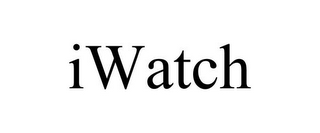When you file an intent-to-use trademark application you must designate the goods and services in the application. What should those goods and services be? This should be easy to answer, right? Its the goods and services that you intend to sell or render in connection with the trademark.
But, it might not be that easy to answer when you have a lot of different types of products or services that will be launched over a period of time. Should all of those be listed? Maybe. One factor to consider is the timing of when you plan to launch each of the planned products or services. This timing then can be compared to the probable deadlines you will encounter in your trademark application.
Trademark Deadlines
Presently, it takes about 9.5 months, on average, for a notice of allowance to issue in an intent-to-use application (See trademark total pendency stats). After a notice of allowance issues, you will have six months to file a statement of use and prove that you are using the mark in connection with all of the goods and services in the application. Therefore you have about 1 year and three and a half months from the filing date to prove that you are using the mark on the goods and services listed in the application, without paying for extensions of time.
If you do not use the mark in connection with all of the goods and services in the application you can file a request for extension of time. This will give you 6 more months to file a statement of use. You can request up to five extensions of time. But you must pay fees on a per class basis to the USPTO for each request for extension of time.
Application of Deadlines to Your Plans
Therefore, if you don’t want to pay for any extensions, the goods and services listed in the application should be those that you plan on selling or rendering under the mark within about a year and 3.5 months of the filing date of the application.
If you are willing to pay for extensions every six months, then you can extend the deadline to show proof up to 3 years after the notice of allowance. That would be 3 years and 9.5 months from the filing date under the current pendancy stats. Therefore, the goods and services listed in the application would be those that you plan to sell or render within that timeframe.
However, you will not receive a registration until you have filed a statement of use. So, if you need a registration quickly for enforcement purposes. You might decide to include only the goods and services that you will be selling or rendering within 9.5 months of filing, so you can quickly file a statement of use and receive a registration.
Split-off Option
If after you file, it becomes important to quickly get a registration for some goods/services when you are not selling/rendering under all goods/services, there is a split-off option. You can split off the goods/services that you are not yet selling into a separate application, and receive a registration on the goods/services you are using. Of course, there’s a fee for this split-off.
Keep Evidence of Intent to Use
Finally, the law requires that you have a bona fide intent to use a trademark on the goods/services listed at the time of filing. And that bona fide intent requires more than a subjective belief/intent. It requires objective evidence of intent as Swatch AG learned the hardway. Swatch’s trademark application for iWatch was found invalid because Swatch failed to show that it had an objective bona fide intent to use the iWatch mark at the time it filed its application.
Therefore, you should keep evidence (documents, models, samples, prototypes, communications, etc.) to show that you had an intent to use the trademark on all of the goods/services that you list in the application at the time the trademark is filed.
The above timing considerations may be helpful in determining what goods and services you should designate in an intent-to-use trademark application.
